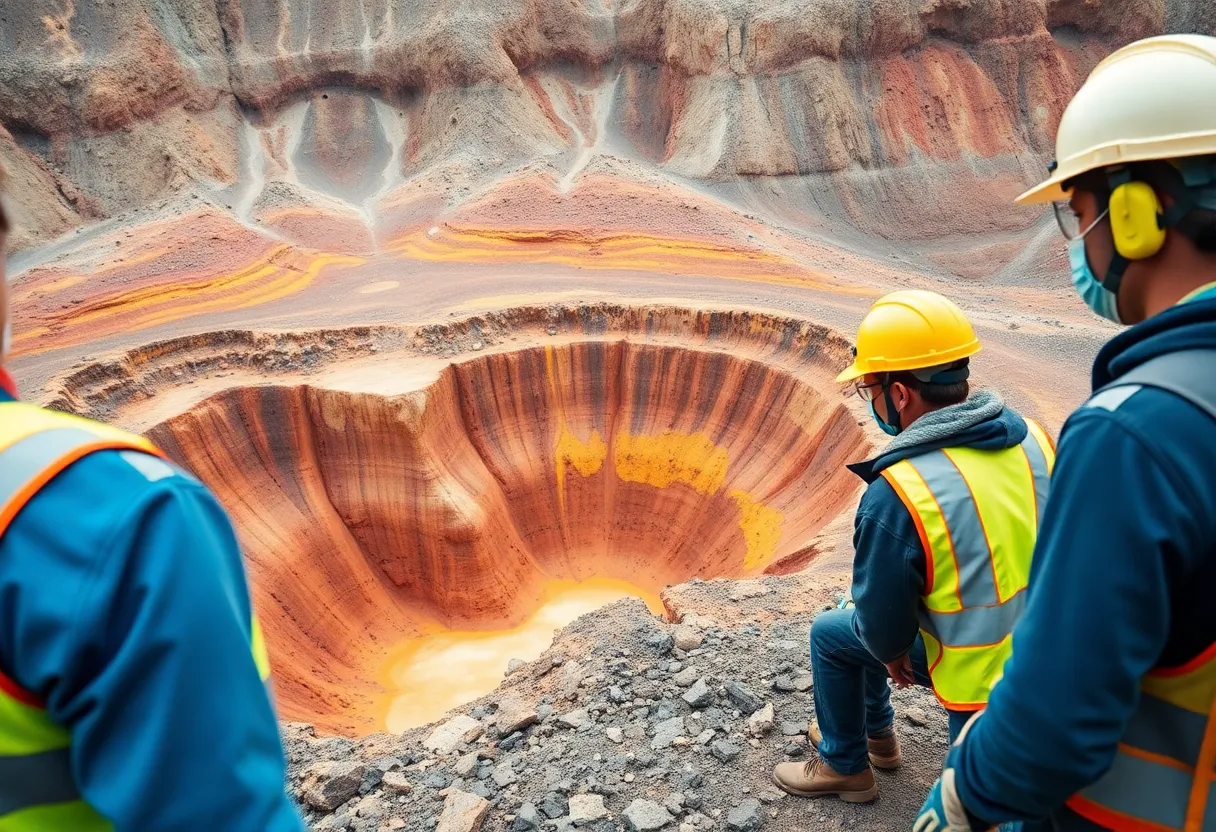News Summary
Despite the decline in asbestos mining, risks remain for miners and local residents due to lingering health issues linked to past exposures. The historic mining of asbestos has left a legacy of diseases like mesothelioma and asbestosis, impacting not only miners but also their families and nearby communities. Legal and financial remedies are increasingly sought by affected individuals while current safety measures are emphasized to combat exposure risks. Continued vigilance and education are essential to address the ongoing health crisis linked to asbestos.
Asbestos Exposure Risks in Mining: A Danger That Lingers
Asbestos, a once-popular mineral known for its heat resistance and strength, is still causing waves of health issues among miners and nearby residents, despite the decline in its mining activities over recent decades. Once referred to as “the magic mineral,” asbestos has an infamous reputation today, primarily due to its link to significant health problems, including mesothelioma and asbestosis.
The Historical Context of Asbestos Mining
The extraction of asbestos and its widespread use have a long, troubling history in the United States. Miners faced enormous risks during the peak of asbestos mining, which ceased in the country in 2002. As human understanding of the necrotic dangers of asbestos grew, regulations were instituted by the Mine Safety and Health Administration (MSHA) and the Occupational Safety and Health Administration (OSHA). Initial exposure limits were set at five fibers per cubic centimeter of air and were gradually tightened to a mere 0.1 fibers—a clear indication that even small amounts of exposure pose a risk.
The Current Landscape of Asbestos Risks
Although there are no operational asbestos mines left in the U.S., the shadow of past exposures looms large. Many miners who worked in areas with known asbestos deposits remain susceptible to diseases long after they have left those hazardous working conditions. Even in mines primarily focused on other minerals, the potential for encountering asbestos remains—a significant factor not to be ignored.
Mining activities can disturb dormant asbestos deposits, releasing tiny fibers into the air that can be inhaled or otherwise come into contact with miners. A study conducted in Minnesota found a higher incidence of mesothelioma among those who worked in taconite mining—a type of iron extraction that can disturb asbestos deposits. This suggests that the occupational hazards extend beyond asbestos mines themselves and into other types of mining.
Secondary Exposure: A Silent Threat
Families of workers are also at risk. Miners returning home could inadvertently carry harmful asbestos fibers on their clothing and hair, exposing their loved ones to the dangers that lurk long after their shift ends. Additionally, communities residing near former or present mining operations may face exposure to airborne fibers stirred up during mining activities, adding another layer of risk to those affected.
Legal and Financial Remedies for Affected Families
As exposure leads to serious health conditions, many miners and their families are seeking justice through legal avenues. Significant settlements have been awarded to victims of asbestos exposure, particularly in notorious cases such as the Libby, Montana vermiculite mine, where a devastating public health crisis unfolded. Legal actions, including a notable $25 million settlement reached in 2017, highlight the ongoing struggle for victims to receive compensation for their suffering.
Current Workplace Safety Measures
The improvement in mining safety regulations has led to a decrease in asbestos-related illnesses, but the threat is still present. Miners today must be aware of their rights, including adequate training and safety measures established by regulators. Mining companies are held accountable to communicate potential risks and provide suitable safety gear, but adherence to these regulations is critical for safeguarding miners’ health.
What Lies Ahead: The Necessity for Continued Vigilance
As the dust settles on asbestos mining activities, the risks of exposure are far from eliminated. While safety measures have significantly improved since the 1970s, exposure remains a dangerous possibility for miners today. Understanding the history of asbestos, the existing risks, and the available legal recourse is vital for those who may find themselves navigating the consequences of past exposure.
Conclusion
Though asbestos mining may be a chapter of the past, the repercussions persist. Education and legal accountability are paramount to ensuring the safety of current and former miners, while also advocating for families affected by this formidable adversary. As the fight against asbestos-related diseases continues, awareness is key to preventing future health crises related to this dangerous mineral.
Deeper Dive: News & Info About This Topic
HERE Resources
Progress at the Historic Turner Brothers Asbestos Factory
The Turner Brothers Factory: A Legacy of Asbestos and Controversy
Asbestos Controversy: Trump, Veterans, and Health Risks
Asbestos and Microplastics: Unseen Health Risks
VT3989 Receives FDA Orphan Drug Designation for Mesothelioma
Landmark Proposed Bill Aims to Transform the Landscape for Rare Cancer Patients
The Innovative Cryoablation Therapy Revolutionizing Mesothelioma Treatment
The Hidden Dangers of Asbestos in Central Asia: A Growing Public Health Concern
Mesothelioma Research Breakthroughs Offer New Hope for Patients
Asbestos Ban Maintained Amid Ongoing Health Concerns
Additional Resources
- Farmonaut: Asbestos Mining Risks in Russia and Kazakhstan
- Wikipedia: Asbestos
- NNY360: Gouverneur Talc Mining Company Trial
- Google Search: Asbestos Mining News
- Mesothelioma Hub: State-by-State Resources
- Google Scholar: Asbestos Mining Health Risks
- Encyclopedia Britannica: Asbestosis
- Google News: Asbestos Legal Cases



















